Study: A Small Cash Advance Can Prevent the Spiral of Homelessness


According to the National Alliance to End Homelessness, over half a million people in the U.S. slept without a roof over their heads on any given night. Over a third of the homeless sleep on the street with family members, and 8 percent of these citizens are U.S. veterans. Many become homeless due to a bad string of luck, as in an unexpected financial emergency resulting from illness, a car accident or a death in the family. In addition to the horrific impact homelessness can have on that person’s psyche, there is also a financial cost shouldered by taxpayers.
Many homeless advocacy groups cite a University of Texas study that estimates the average homeless individual costs the taxpayer $14,480 per year. One U.S. Department of Housing and Urban Development study suggests the costs associated with homelessness can exceed $40,000 per person annually.
But a recent study published in the journal Science proposes that municipalities and philanthropic agencies can prevent homelessness by offering a one-time cash infusion. Combing through data records at a homelessness call center in Chicago, the study’s authors evaluated the fate of families and individuals who were able to secure a quick cash advance, when funds were available, between 2010 and 2012.
Their conclusion: A one-time cash distribution of as little as $1,000 not only kept these citizens off the streets for at least two years, but also could reduce local taxpayers’ financial burden. The researchers found that targeting low-income wage earners, who have a proven ability to pay rent but may have been sidetracked by an unforeseen event such as a medical emergency, was a far more cost-effective approach than a patchwork of homeless programs.
Emergency grants for the most vulnerable in society are available across the country, but as in the case of Chicago, funding is often spotty. The Science study posits that fully-funded programs in communities could help prevent many from falling into homelessness, but a change in attitude from Washington, D.C. to city councils across the country is needed. The current political orthodoxy is that any kind of cash distribution, with few strings attached, amounts to “charity” that will keep citizens on a never-ending cycle of dependency. Much of this narrative dates back to Ronald Reagan’s first run for the presidency 40 years ago, when his denunciation of the mythical “welfare queen” added to the Southern Strategy narrative that Richard Nixon launched in 1968 to convince more Southerners and working-class whites to spurn the Democrats and vote for the GOP.
Yet as Kathryn J. Edin and Luke Shaefer suggested last year in Salon, American taxpayers actually pay more for programs such as tax credits and subsidies now than they did a generation ago, when the oft-maligned “welfare checks” were more widely distributed to poorer citizens. The end result, however, is that as a society we are spending more to deliver less to those who are the poorest and at the most risk. Even stodgy global organizations such as the World Bank and International Monetary Fund suggest that instead of subsidies and tax credits, a no-strings cash donation creates a stronger, and more cost-effective, safety net for the most vulnerable. Cities that cope with high levels of homelessness, but are sidelined by lean budgets, should consider launching an emergency housing grant program for citizens who earn low wages and are at most risk of losing their homes.
The suggestions offered in Science will not help those who are chronically homeless, a problem endemic in many California cities such as Santa Cruz, in which the combination of high rents, a reputation for being homeless-friendly and demagoguery by some advocates all contribute to this challenge. Santa Cruz is a textbook example of how, despite an aggressive suite of programs dealing with homelessness, this problem still festers to the frustration of business owners, civic leaders and the homeless themselves. Nevertheless, such an emergency program can prevent more citizens from falling into this vicious cycle of homelessness, with fewer costs to society and municipal ledgers in the long run.
To that end, in nearby areas such as San Francisco and Silicon Valley, where the high cost of living makes it difficult to secure that deposit and first rent payment, technology companies -- which at a minimum indirectly contribute to the region’s high rents -- have an opportunity to show that they are trying to address this problem rather than adding to it. When the likes of Facebook and Google talk about "community," more action taken on working with municipalities to tackle the problems of homeless can show such commitment.
The bottom line is that the longer someone is homeless, the greater the toll on that individual and the community attempting to take care of him or her via emergency medical care, nights spent in jails or expanding access to homeless shelters. A program that incorporates strings-free cash infusions is worth a shot. And businesses, especially those whose storefronts often become overnight accommodation for people who lack a dependable roof over their heads, could crunch the numbers and make the case to launch a program in order to make their communities a more resilient place in which to live and work.
Image credit: Franco Folini/Flickr
Facebook Chooses Governments and Profits Over Users' Freedom and Information


As more and more information is being shared through social media, the opaque content policies of social-media companies create concerns that these new gatekeepers of the Web may not have the public's best interest in mind. None more so than the giant, Facebook, and its moves toward working with government to circumvent users free speech.
We live in an era of information, with user-generated content often being the catalyst for massive media stories.
In fact, one can connect the rise of the Black Lives Matter movement to the spread, via social media, of videos, photos and other content about police brutality. Whether it was the “I can't breathe” quote uttered by Eric Garner before he suffocated at the hands of an NYPD police officer, or the heart-wrenching video of a fatally wounded Philando Castile, whose fiancé says was shot while reaching for his drivers license, these viral media have shown all Americans what far too many African Americans have to deal with daily.
The Castile video was shared via Facebook's new video system, Facebook Live. And it may not be possible again, because police are increasingly working directly with Facebook to prevent users from sharing content before it goes viral, Quartz reported on Sunday. Case in point: what happened earlier this month in Baltimore.
"As events unraveled and before police shot and killed [23-year-old Korryn Gaines], they asked Facebook to suspend Gaines’ accounts on both platforms," wrote Quartz reporter Hanna Kozlowskaqz. "They said users were egging her on not to give in during their negotiations. Facebook complied with the request and anyone watching Gaines’ feed found themselves cut off."
Facebook's response is what anyone receives when they attempt to reach the company: Gaines' videos violated their content policy. This content policy is opaque, unevenly applied, and subject to no oversight except that of Facebook and its secret algorithms. What if Facebook had used this policy to block Castile's fiancé from sharing her video on Facebook Live?
Or, and this is a real possibility, what other content has Facebook already blocked without us even knowing about it?
What's happening here in America is not nearly as scary as what's taking place abroad. In countries like Thailand, Cambodia, Turkey and Egypt, people are being regularly arrested for what they post on Facebook or Twitter. In Thailand, it can be something as simple as indirectly insulting the Royal Family's dog. In Turkey, it can be doing real journalism, as the increasingly authoritarian government there clamps down on the free press.
It might get worse. Facebook is actively courting the world's largest Internet market, China, where arrests, censorship and government monitoring of the Web are everyday occurrences. Facebook CEO Mark Zuckerberg has even met with the country's propaganda chief.
China is ground-zero for censorship and the blocking of the spread of information online. Case in point: The popular Chinese alternative to Facebook, WeChat, is suspected of giving China direct access to its content, which is regularly censored.
Access to this huge market – and billions in advertising potential – are far more important than protecting users' privacy and rights. Considering how readily Facebook responds and works with police in the U.S., it is not that far-fetched to imagine the company giving Chinese authorities access to its networks.
What's the alternative? We need a social network that respects user privacy, allows for the sharing of important videos like those that have shown the world the reality of police brutality in America, and does not accede to government demands -- whether it is a police department in America or the authoritarian Chinese Communist Party.
Facebook is trending in the wrong direction, and with control of the company firmly in the hands of Zuckerberg for years to come, I highly doubt Facebook will ever be that network.
Image credit: Kvarki via Wikimedia Commons
An Ivanka Jewelry Buy Becomes a Gift That Keeps on Giving for Anti-Trump Causes
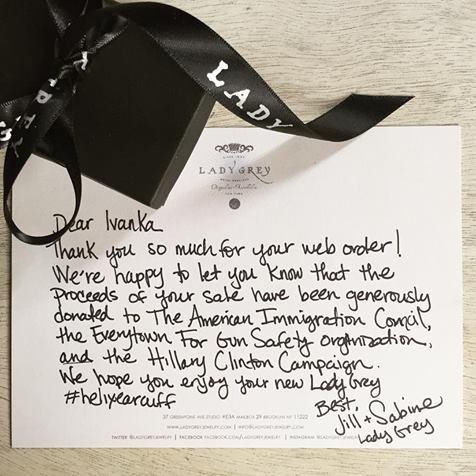

In a move that will probably motivate Trump family members to task their personal assistants with online purchases until after the election, a Brooklyn-based boutique jeweler channeled a purchase by Ivanka Trump into donations for Hillary Clinton’s campaign and other causes that oppose Donald Trump’s politics.
According to the style blog The Cut, Jill Martinelli and Sabine Le Guyader, who launched Lady Grey Jewelry in 2009, received an order from Ivanka Trump for a pair of their helix ear cuffs. In an Instagram posting that was repeated on Facebook, Martinelli and Le Guyader announced the sale, and took a photograph of a handwritten note that said:
“Dear Ivanka – Thank you so much for your web order! We’re happy to let you know that the proceeds of your sale have been generously donated to the American Immigration Council, The Everytown For Gun Safety Organization, and the Hillary Clinton Campaign. We hope you enjoy your new Lady Grey #helixearcuff”
Martinelli and Le Guyader did not disclose how much each organization received, but the amount is hardly overwhelming. The ear cuffs, which are available as either gold- or silver-plated, retail for $84 on the boutique’s site.
Nevertheless, reactions from all fronts were fierce. Pro-Trump forces took the bait and savaged the designers to the point that Martinelli and Le Guyader briefly set the company’s Instagram to private; at press time, their Twitter account was still protected. Many of the comments on both Facebook and Instagram reflected what Trump opponents would say has been marred by the misogynist and racist tone of his campaign.
“Your sales will plummet … poor business … We like Ivanka … clasdy [sic] lady.”“Your business will official [sic] go bankrupt due to this post. You’re an idiot if you believe the liberals will keep you afloat at this classless act.”
“This company won’t be around much longer. F--- apple, who said we arent [sic] boycotting that either?”
“Start creating B L M [Black Lives Matter] jewelry … They will end up being your only customers.”
Indeed, some of the discussion (or outrage) on social media brought up fair points, including whether it was proper to go after a family member of a presidential candidate or to violate that same person’s privacy. Most of the comments, however, reflected the tone of a campaign that is now struggling due largely to those messages. The Trump campaign’s statistical tie or even slim lead in most opinion polls a month ago has collapsed into a 10-point deficit nationwide and by large margins within the vast majority of battleground states.
And Ivanka Trump is no Bush twin or Margaret Truman, examples of presidential progeny who eschewed the spotlight of politics. She has been described as the “de facto campaign manager” of Trump’s 14-month run for the presidency and is credited by many publications, including the New Yorker, of polishing Trump’s quest with a professional veneer. Ivanka’s fingerprints are all over many of her father’s policy positions, including his child care plan; when The Donald was asked if any women would be in his cabinet, he could only name his daughter; and even one U.S. senator suggested that her 35th birthday in October would come just in the nick of time to make her a strong vice presidential candidate.
Although Trump supporters have painted the Martinelli and Le Guyader partnership as the new bête noire showcasing everything that is wrong with America, this Brooklyn duo can look forward to a booming business once the dust from the trolling settles. During a 20-minute span yesterday, their Instagram account scored 800 more followers, the photo of their love letter to Ivanka generated an additional 2,100 comments and 3,400 likes and, now, “Lady Grey helix ear cuff” trends on Google. While many are aghast that Lady Grey has tainted its business with 50 shades of left-wing politics, the fact is that the big shots in the business and finance worlds, from George Soros to ExxonMobil, have long taken political stands making them heroes to some and heathens to others.
So, whether you call it shade or snark, this case of generating notoriety by flipping the bird at someone who leans more Democratic than Republican in her politics anyway is yet another chapter of this sordid campaign. Let’s face it: No matter where your politics may lie, this campaign is a gift that keeps on giving.
Image credit: Lady Grey Jewelry/Facebook
Industry Study Touts Environmental Benefits of Plastic
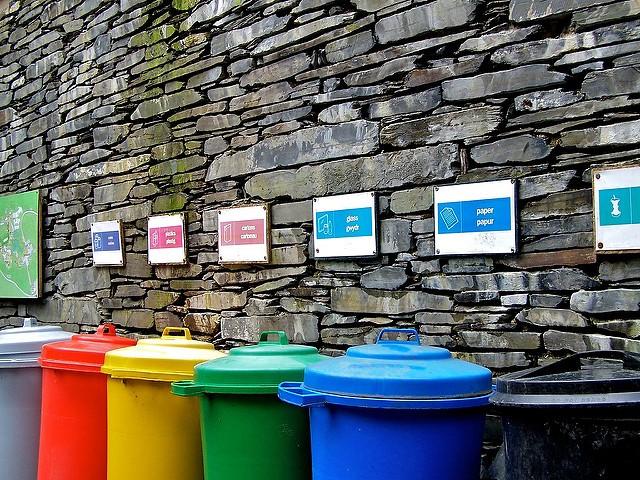

Plastic has increasingly become the storage and packaging material of choice, and its use has risen exponentially since it first become commonplace during the 1950s. Indeed, the wide adoption of plastic has contributed to an improvement in public health, allowed cars to become lighter and more fuel-efficient, and played a critical role in emergencies with the distribution of goods including potable water. But while the plastic industry says it is committed to recycling, and more companies are finding innovative ways to use recycled plastic, the stubborn fact is that municipalities still struggle with the huge streams of plastic waste.
But despite these challenges, the American Chemistry Council (ACC) insists via a sponsored report that plastic has an environmental impact far smaller than alternative materials.
Trucost, a United Kingdom-based consultancy that describes itself as an expert in “natural capital dependency,” said it completed a full overview and life cycle assessment (LCA) that reached several significant conclusions. Among these findings were:
- The cost of using plastic to package consumer goods and food had an overall environmental impact almost four times less than materials such glass, tin, aluminum and paper.
- Plastic materials’ manufacturing and transport account for the greatest environmental costs, which could be reduced with the use of more clean energy, better packaging designs and more efficient transportation fleets.
- The capture of plastic waste before it reaches the world’s oceans could cut the costs of income by $2.1 billion.
- Increasing the recycling of plastic materials to 55 percent (currently those rates are in the signal percentage digits) and slashing landfill disposal to a rate of 10 percent could reduce their environmental costs by almost $8 billion.
- Plastic’s environmental advantages are not uniform across all sectors. While they have a greater benefit in the manufacturing of large goods such as furniture and automobiles, those benefits decrease as they are used in industries such as consumer electronics, food and beverages and household goods. Toy manufactures, according to this study, generate the least environmental benefit out of all sectors this study evaluated.
Finally, the Trucost study argues that despite the downsides of plastic, its environmental costs, especially in the case of more sustainably manufactured plastic, has a far small impact than competing materials. Due largely to production, transportation and disposal costs, the environmental costs of these alternative materials soars to $533 billion. The study, in contrast, claims that all plastic carries an environmental price tag less than half that figure: $237 billion.
But what the study dismisses is the strain plastic has imposed on municipalities tasked with the collection, recycling and disposal of this material. Trucost’s researchers suggest that improved municipal waste collection processes, especially in developing countries, could have a huge role in mitigating plastic’s environmental impact.
Furthermore, the study does not mention extended producer responsibility (EPR) once. And why would it? Advocates for ERP say the burden of collecting, disposal and finding ways to recycle these products should be on the companies that manufacture them instead of on local governments. But food and CPG companies are not having it and instead focus on zero-waste efforts within their supply chains and operations. The two-year slump in oil prices has also hit the recycling industry hard, as there is little incentive to recycle plastic when manufacturing it from virgin material is a far cheaper and easier option.
Furthermore, while one can crunch the numbers and find that plastic may use less energy than other materials such as aluminum, such materials are recycled at much higher rates, with less garbage going to ever-shrinking landfill space here in the U.S. and abroad. The fact is, while only paper products and organic waste take up more landfill space than plastic, the industry infers that consumers and cities, not the industry, should find ways to reduce the streams of plastic finding their way into garbage dumps.
Finally, while the study is based on a methodology that incorporates natural capital valuation techniques, it deserves closer scrutiny when one considers who reviewed the study before its final publication. While one reviewer was from a LCA consultancy, the rest were either from the ACC or the plastic industry. No one from a municipal agency tasked with waste collection, or any environmental group, reviewed the study or its methodology.
The Trucost/ACC study is right in admonishing plastic manufacturers to incorporate natural capital accounting in order to gain a stronger grasp about their products’ environmental impact. But the industry could also be more proactive and work with cities and towns in developing waste diversion solutions in order to cope with society’s affinity for plastic. Whether the industry invests in more recycling programs, works with local governments to implement recycling fees or educates consumers of plastic's impacts, the industry's trade groups need to show more substance and progress than rely on slick public relations campaigns.
Image credit: Dave Goodman
Ford Announces Mass-Produced, Fully-Autonomous Car for 2021


Ford Motor Co. made a big announcement this week. According to CEO Mark Fields: “Ford will be mass-producing vehicles with full autonomy, within five years. That means there will be no steering wheel, no gas pedals and no brake pedals. A driver is not going to be required.”
While other auto and tech companies are clearly working in this area, this announcement goes the furthest so far.
CEO Elon Musk says Tesla will have full autonomous capability by 2018, claiming that you’ll be able to “summon” your car in New York while you’re in LA, and it will drive itself there to meet you. But Tesla dos not claim this will be a fully-implemented, mass-produced capability. Some Tesla models already have autonomous driving features. But after news of the first autopilot crash fatality, the company has been careful to say these features are considered to be part of a Beta test, and drivers are advised to keep their hands on the wheel at all times.
Ford's new vehicle will be available in 2021, as part of the company's Smart Mobility initiative. It will be a Level 4 autonomous vehicle and will have no steering wheel, Ford says. The vehicle will be aimed at ride-hailing or smart-shuttle applications, Ford Chief Technology Officer Raj Nair and Ken Washington, Ford VP of research and advanced engineering, said at a press conference in Palo Alto, California, on Tuesday. They also mentioned the possibility of an autonomous cargo van for parcel delivery.
Nair quoted CEO Mark Fields, who said, “We see autonomous vehicles as having as significant an impact on society, as Ford’s moving assembly line did, more than a hundred years ago.”
Meanwhile, GM, which recently acquired Cruise Automation, began testing autonomous versions of its all-electric Chevy Bolt in Scottsdale, Arizona, last week. GM recently tried to acquire the ride-hailing company Lyft, in which it currently owns a 9 percent stake.
But unlike GM and Tesla, Ford will not necessarily use an EV as its platform for this autonomous vehicle. While acknowledging that the technology being developed could work with any type of powertrain, there are good reasons why a hybrid might be the best fit for this application. As Washington pointed out, all the electronics required to make a vehicle autonomous amount to a significant power drain. Therefore, in a ride-hailing (e.g. Uber) type of scenario, it might make more sense to use a hybrid vehicle, when the lost productivity due to frequent recharging stops is factored in.
Work on the project will take place in Palo Alto, where Ford plans to double its workforce which now stands at 130.
Several new partnerships were also announced. These include:
- Velodyne: Lidar for distance sensing
- SAIPS: Computer vision and machine learning
- Nierenberg Neuroscience: Machine vision
- Civil Maps: High-resolution 3-D mapping
Because of the high level of integration and the tight feedback loops involved, Ford will produce much of the software itself, though its partners will contribute, the automaker said.
CEO Mark Fields concluded: “We’re dedicated to putting on the road an autonomous vehicle that can improve safety and solve social and environmental challenges for millions of people – not just those who can afford luxury vehicles.”
Image courtesy of Ford Motor Company: Editorial Use Only
There's a New Koch-Funded, Pro-Fossil Fuel Group in Town
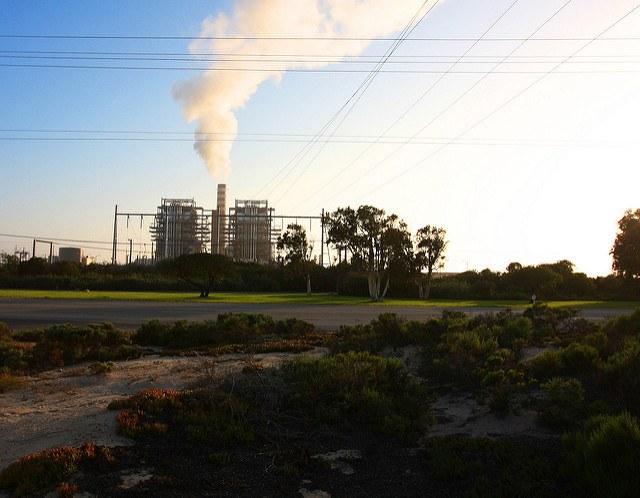

Some oil men are desperate to market fossil fuels as good for America. To that end, a new organization launched last weekend called Fueling U.S. Forward, whose goal is to put a positive spin on fossil fuels. The organization launched in Denver, Colorado, at the Red State Gathering 2016. It is financed by Koch Industries, DeSmog Blog reported over the weekend.
“We need a sustainable energy to ensure the future of the country,” Charles Drevna, the organization’s president and CEO, said in Denver. The energy needed should be “reliable, abundant, efficient and sustainable fuels.” He added: “That's of course the fossil fuels.”
A glance at the organization’s website backs up what Drevna told the audience in Denver. Fueling U.S. Forward believes that the “vast majority of oil and natural gas that we use to power our day is available right here in America.” The organization also believes that fossil fuels “fuel innovation and save lives.” Here’s the key phrase listed under the organization’s beliefs: “When we talk about powering our future, we can’t afford to leave anything off the table.” It sounds like it is lifted out of the Republican National Convention’s platform on energy which favors an “all-of-the-above” energy policy that takes “advantage of all our American God-given resources.”
What exactly does Fueling U.S. Forward plan to do? It wants to “take the conversation out of Washington, D.C. and into local communities," Drevna said. And it will do so, he said, by talking to the American people. Or better put, it will talk at the American people and try to convince them that continuing to pump fossil fuels is positive for the U.S. “We've got to take this to the emotional and personal level,” Drevna said last weekend. “Oil and natural gas, they're not the fuels of the past and maybe the present or a necessary evil. They are the future.”
Fueling U.S. Forward is the same old message that the oil and gas industry has put forth about fossil fuels for years. “From what we see so far, Fueling U.S. Forward is just a shiny new can that holds the same old rotten messages about the alleged and exaggerated benefits of oil and gas,” Ben Jervey, researcher and editor with DeSmog working on KochvsClean, and the Climate and Energy Media Fellow at Vermont Law School, told TriplePundit.
It seems the organization's goal is to influence younger people. As Jervey said, “It's clear through their website and social media assets that they're trying to reach the young folks and the influencers, to somehow reclaim some sense of necessity.”
We are only into the eighth month of 2016, and the U.S. has already experienced many extreme weather events. A recent Huffington Post article listed those extreme weather events, which included the California wildfires. During the first six months of this year, California had double the amount of acres burning than during the same time period in 2015, according to the California Department of Forestry and Fire Protection. The latest fire broke out in San Bernardino County in Southern California on Tuesday. Dubbed the Blue Cut Fire, it has burned over 30,000 acres and as of Wednesday wasn’t contained at all. And Californians can expect more wildfires. A new study found that there will be a surge of wildfires in the West as a “consequence of climate change.”
And parts of Louisiana are facing deadly floods. The floods have displaced 20,000 people and ruined many houses and other buildings. The cause of the floods is “crazy rainfall,” Bill McKibben wrote in a piece for the Huffington Post. That crazy rainfall occurs “when you’ve heated the atmosphere, allowing it to hold more water vapor,” McKibben wrote. He links the floods in Louisiana to what is heating the atmosphere, the “carbon and methane we’re pouring into the atmosphere at such a breakneck pace.”
Tell that to Drevna and the other folks at Fueling U.S. Forward. But it will likely fall on deaf ears as they have long been deaf to the plight of people who are victims of extreme weather events linked to climate change.
Image credit: Rennet Stowe
How a Hudson Valley Entrepreneur is Transforming the Shrimp Industry


The Hudson Valley is many things. The region is a perfect contrast from the crowded chaos of New York City and its suburbs in the outer boroughs and New Jersey. Lush emerald landscapes that turn into bold red, orange and yellow hues connect historic towns that take you back as far as the 18th century. The majesty of West Point and the country club vibe of FDR’s mansion are among the many reasons why it is easy to extend one's visit here.
What we do not associate with the Hudson Valley is farmed shrimp and sustainable aquaculture. But Jean Claude Frajmund could change that perception and inspire others to grow food sustainably and responsibly in this region and beyond.
The global shrimp industry has grown rapidly over the past two decades. New farming techniques and advances in cold storage and transportation have made this crustacean more accessible and popular with consumers. Many who cannot even stand the sight of shellfish will happily gobble up shrimp. But the impact that shrimp imposes on people and the environment is often a detrimental one.
The World Wildlife Fund (WWF) estimates that Americans eat four pounds of shrimp each year on average. To match that demand, several governments in Asia and Latin America have promoted farmed shrimp as a path to economic development and poverty alleviation. But the results were often damage to fragile ecosystems and water pollution. Add the industry’s links to human rights abuses and slave labor, and the consumption of shrimp poses a massive ethical dilemma.
To that end, Frajmund launched Eco Shrimp Garden last year in Orange County, New York. The company’s first project contains scores of indoor pools inside a retrofitted mattress factory in the town of Newburgh. According to the company, its Pacific white shrimp is raised without any antibiotics, chemicals or hormones. The plant recycles all of its water, and the shrimp are fed a diet similar to what they would eat in the wild. After they are processed, the shrimp are delivered fresh, never frozen, as far as New York City, 66 miles south of Newburgh.
Eco Shrimp Garden sells its 16- to 20-count shrimp for about $25 a pound, a competitive price for those who eschew the cheaper imported shrimp grown in dubious conditions. So far, the company says it sells about 300 pounds of shrimp a day with demand continuing to surge. Frajmund’s investment in turn is generating jobs in this town of 28,000, where unemployment, as in much of upstate New York, is higher than the national average.
Frajmund, who is originally from Brazil, embarked upon a long career journey before he settled in Newburgh. He started as an information technology staffer for the Brazilian government before working as a cameraman throughout Europe during the 1990s. After returning to Brazil, he started a production company and eventually became a vice-minister within Brazil’s communications agency. He spent the past decade going back and forth between Brasilia and New York before deciding to invest in what is now New York State’s first indoor shrimp farm. His venture, a huge divergence from his previous work, has started to attract more media attention, including a recent interview on National Public Radio.
Aquaculture has garnered its fair share of critics, who have charged that lax oversight, the reliance on antibiotics and crowded conditions for shrimp and fish can create more problems than it solves. But if managed responsibly, farmed fish and seafood are a tool in the kit that the world needs if it is going to sustain a growing, and more affluent, population.
Image credit: Eco Shrimp Garden
Does Digital Currency Pose a Threat to the Banking System?
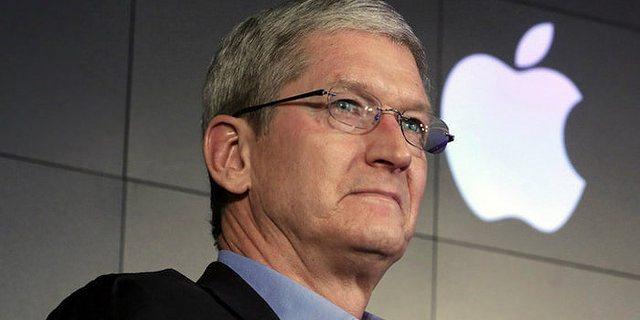

By Daniel Matthews
For anyone watching Apple’s ever-expanding role in the world of tech, it’s been an interesting year to say the least. And it just got more interesting. Apple is making Australian banks look petulant. Or, depending on how you look at it, the banks are making Apple look monopolistic.
A “bloc” of Australian banks is petitioning the Australian Competition and Consumer Commission (ACCC) to make Apple give them the secret to Apple Pay and NFC technology, the Register, a U.K. newspaper, reported last week.
NFC technology is near field communication, a type of RFID (radio frequency identification) that allows your cell phone to communicate with a credit card reader. Samsung, Walmart and Android have all patented their own contactless payment technology using NFC. So, why are the banks picking on Apple? Why can’t they hire someone to create their own contactless payment app? There’s something about Apple and its product that these banks view as a threat.
Apple already sparred with the FBI in a case that seemed a lot more serious. Short synopsis: The FBI viewed Apple’s encryption as threat to security, because it protects killers' information, such as that of San Bernardino shooter Syed Rizwan Farook. Apple fought back, saying a backdoor to the iPhone equals a threat to consumer privacy. The FBI found a third-party hacker and dropped the case.
There’s a trend here. Stakeholders want to crack into Apple’s technology and use the law (whether that law is an outdated All Writs Act or Australian Competition Law as referenced above) as their reason for access. But Apple has the power of the consumer -- and the presumed protection of consumer privacy — on its side. The ACCC’s decision will see what type of pull Apple’s power has in Australia.
Apple is using the potential threat to privacy and security as one of the reasons for rejecting the banks. If the banks get their hands on Apple’s NFC antenna, essentially piggy-backing off Apple Pay, they’ll be able to access information people have given to Apple.
Credit card companies would be able to collect the fees Apple collects with each use of Apple Pay, and banks work hand-in-hand with creditors. Apple feels it has the right to the fees — it patented the app, and the app is integrated with the technology. Apple says the banks want to form a ‘cartel’ to give unfair advantage to the credit card companies.
From the banks’ perspective, NFC is simply a type of technology. The people using Apple Pay NFC, they say, wouldn’t be able to use it without banks. In their logic, if people are going to use Apple Pay to access funds banks are holding, then banks deserve to profit from the use of the technology, not Apple. In this scenario, Apple becomes a mere go-between connecting consumers and banks.
The problem with this argument is that Apple doesn’t have the patent on NFC. Apple isn’t saying the banks can’t develop their own NFC-based apps. The banks just can’t call their app ‘Apple Pay,’ and they can’t take advantage of an app that already has that name. The banks are confusing Apple’s app, which allows people to use NFC technology, with NFC technology itself.
This case represents the growing potential for disruption of the banking system by digital currency.
On the blockchain and bitcoin side of the, uh, coin, digital currency has taught us that there’s an alternative to the centrally-managed banking system. If a peer-to-peer network with the right technology holds the keys to payments, in theory we don’t need banks.
Check out the infographic below for a crash-course in digital currency:
The technology that enables bitcoin is Application-Specific Integrated Circuits (ASIC). This hardware allows bitcoin miners to participate in the blockchain. Like NFC, blockchain is something anyone can use with the right hardware.
The stage is set for banks. Just like with Apple Pay, with bitcoin and blockchain, you’re either in or you’re out. Plenty of banks have already decided they’re in on Apple Pay and NFC. But NFC is merely a different way of using the centralized system. Apple isn’t disrupting that system, just nudging it to include an unorthodox player. Bitcoin cryptocurrency, on the other hand, could disrupt the system.
Cryptocurrency’s value is speculative, based on factors such as how many people use it to replenish their wallet, issue salaries, or pay merchants. A Miami judge ruled that a man couldn’t have committed a crime with bitcoin, because it’s not real money.
Where does this leave banks that are starting to take cryptocurrency seriously? There’s still the matter of value. People are ascribing value to cryptocurrencies. The blockchain is more secure than centralized banking, and security increases perceived value. Banks will want in on that value.
But when banks decide they’re in on bitcoin — when they store it and centralize its exchange — bitcoin becomes vulnerable. That’s what happened with Bitfinex. The Hong Kong bitcoin bank got hacked to the tune of $77 million. Bitcoin’s value has since gone down. But it will go back up again as people continue to use it outside of any sort of hackable banking system.
This presents a paradox for banks. They have to use bitcoin on the blockchain, not cached in a system. But using bitcoin on the blockchain — coming to cryptocurrency on its terms — undermines the centralized system on which banks rely. For one, it removes backup by the Federal Reserve Bank, which sets interest rates and insures funds against theft and borrower default.
Compared to bitcoin, Apple Pay and other NFC applications present a relatively minor threat to banks. As the dispute in Australia demonstrates, Apple threatens the primacy of credit card companies more than banks. Chipping away at credit card processing fees is one thing. Decentralizing the system is another.
Still, I don’t think we should underestimate what the Apple Pay dispute represents. The Australian banks, like the FBI before them, are sniffing out a power shift -- and they don’t like it. Whoever holds the keys to ubiquitous technology, effective in each compartment of our lives, holds a level of power over the institutions that used to be only game in town.
Image credit: Flickr/iphonedigital
Featured image: Federal Reserve Bank of Chicago, courtesy of Tony The Tiger/Wikimedia
Infographic courtesy of Northeastern University's Online Master of Finance Program, used with permission
Daniel Matthews is a freelance writer specializing in business, tech, and travel at the intersection of ethics and sustainability. You can find him on Twitter.
Healthy Snack Boosts Sustainable Development on South Dakota Reservation
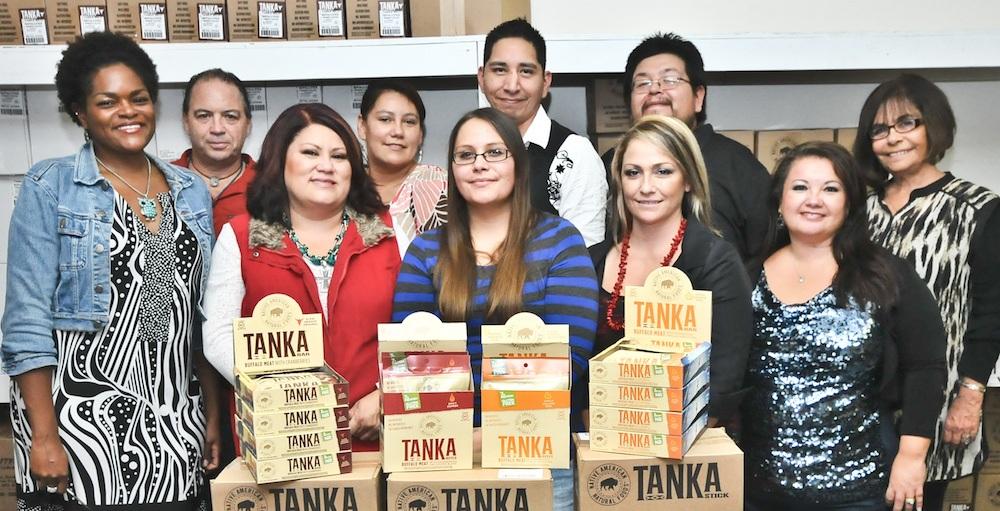

Editor's Note: A version of this post originally appeared in Commons Magazine.
By Jay Walljasper
The Pine Ridge Indian reservation is not the first place you’d look for good news about creating a new kind of economy that works for everyone.
This corner of South Dakota includes several of the poorest counties in America, according to census figures. Ninety-seven percent of Pine Ridge’s Lakota Indian population lives below the federal poverty line, reports the American Indian Humanitarian Foundation. The unemployment rate is well over 50 percent.
Yet these dire conditions — compounded by public health problems like diabetes and addiction — have not snuffed hope. Growing numbers of Pine Ridge residents are embracing their own traditions as a path toward healing and economic self-sufficiency.
The Thunder Valley Community Development Corp., for instance, is moving forward on an ambitious set of projects, including a worker-owned construction company, a worker-owned IT firm and a farm to combat lack of access to nutritious food.
Even more surprising, Pine Ridge is home to a fast-growing natural foods food company, which created a healthy new product in the booming snack food industry. Native American Natural Foods was inspired by wasna (a concoction of cured buffalo meat and berries) to invent the Tanka bar—which is now for sale at Whole Foods, Costco, Amazon.com, natural food stores and other groceries across the nation. Available as a protein bar, a meat stick and in bite-size bits packaged with Lakota-style trail mix, the all-natural snack features flavors like spicy pepper, apple orange peel, jalapeno and slow-smoked original.
Tanka sales reached $5 million last year in 8,000 stores, Forbes reports, and the company currently buys 25 percent of its buffalo from Native American growers, with the goal of 100 percent.
“The for-profit company — which actually is making a profit — recently gave equity to its employees,” the magazine continued, “… And they’re persevering despite growing competition from other companies selling buffalo meat with marketing campaigns that evoke a Native American theme, if not their authenticity.”
Tanka is now battling for space on grocery shelves with meat bars produced by food conglomerates — including the Epic bison bar, which was recently acquired by General Mills. Epic is an Austin-based company that originally produced the vegan Thunderbird bars, whose packaging claimed each one was “shaman blessed." (Chocolate maker Hershey Foods also recently bought Krave, a line of snack meat products.)
That’s the dark cloud on the horizon for this Indian Country success story, says Native American Natural Foods co-founder Karlene Hunter, a Lakota who has spent her entire life on Pine Ridge. “We created the [meat bar] category but now we’re fighting with a food industry giant on something that is our centuries-old recipe.”
Hunter is certain that Tanka can compete based on the quality of their products, but is concerned that Epic’s deep pockets could outdistance them in reaching new stores and customers. “We don’t have $20 million to throw at this like a big company.”
“We started this company to regenerate our community, not just to make a profit,” she explains. “Last year we gave five percent of our company to the seven employees that have worked with us to build the company. We pay our staff good salaries for this area. We buy our wild rice from the Red Lake Reservation in Minnesota. We buy our cranberries from a company that buys from tribes in Wisconsin.”
“Tanka can change people’s perceptions of Pine Ridge and what’s possible here. We came up with a brand right here on the reservation that changed the whole meat snack industry,” says Native American Natural Food’s other co-founder Mark Tilsen, who has lived on Pine Ridge on and off since he was 16. Although not Lakota, he came to the reservation to join his father, who was a lawyer defending Native American activists involved in the Wounded Knee occupation in 1973. His children and grandchildren are all enrolled tribal members.
Hunter and Tilsen first partnered to create Lakota Express, a Pine Ridge-based communications company that created fundraising campaigns for Oglala Lakota College and other Native American causes, which they still operate. The idea for Tanka bars arose in a meeting with Lakota ranchers, who sought advice on finding more customers for their buffalo.
“We want to do something that no one has done before: create opportunity for people who live here,” Tilsen notes. “To offer people the chance to become owners and step into the position of being a manager. When you have a brand like ours, you do things that competitors don’t do.”
Three years ago, Native American Natural Foods launched the Tanka Fund to help Native Americans communities nationwide return buffalo to their land as a way to create community wealth, restore the environment and improve their diets. They introduced a new product to support the project, a turkey-buffalo-cranberry jerky bar, for which ten percent of all profits will go to the fund.
Tilsen and Hunter believe Tanka’s mission builds loyalty among their customers, who can help regenerate Native American culture by enjoying traditional Lakota food. But they worry competitors also wants to evoke those positive associations too.
“In their social media, Epic calls customers their ‘tribe.’ I even read they named their dog ‘Lakota,’” Hunter reports. “That’s not cute; it’s patronizing — and misleading.”
While their competitors can shell out big bucks for marketing campaigns or discount prices to gain market share, Native American Natural Foods has some distinct advantages too.
They’ve been supported by philanthropic groups like the Northwest Area Foundation and non-profit organizations like the Democracy Collaborative, which fosters worker cooperatives and other forms of community wealth building across the country through initiatives like its Learning/Action Lab, which supports a cohort of four Native American communities.
And then there are the growing numbers of people who want to know all about the food they eat and products they buy. “A lot of younger customers, especially, want to drill down into where the food comes from,” says Tilsen. “They are searching for the truth, not just a story cooked up by the marketing department. A lot of our customers have those values.”
Image credit: Katie Hunter, used with permission
Jay Walljasper, author of "All That We Share: A Field Guide to the Commons" and longtime editor of Utne Reader, writes widely about justice, environmental and community issues.
Listening To Learn: Best Practices for Social Purpose Strategy


By Kelsey Halling
A couple of years ago, a graduate student and I sat down to enjoy a cold beverage in an oppressively hot Haitian bar. The topic? The importance of listening to feedback over prescribing solutions.
“But how do you go about getting that information?” she asked.
“It’s simple,” I responded. “You pick a neighborhood and get an introduction to someone who lives there. Then pay them to join you for a day of walking from house to house, meeting their neighbors, and asking if you can talk to them about garbage. When a neighbor says yes, survey them.”
“But, that would take so much time!” she exclaimed.
It does.
And it’s worth it. And a lot of organizations don’t do it.
Listening
One of the things I am most proud of when it comes to the way that our company, Thread, conducts business, is that we have spent the past five years asking good questions as opposed to prescribing answers. Asking good questions is one of the most important skills a person, or a team, can develop. It’s also a skill attributed to successful high-performers, so it stands to reason that it translates as an indicator of a successful company.
Good questions require listening, synthesizing data, seeing the gaps in your own understanding or planning, and then finding the right information to make the best decision. Questioning, rather than prescribing is what leads to innovative, collaborative, sustainable solutions. I believe that this is why Thread has been successful in Haiti -- an environment where we have watched many organizations fail.
When we fail to listen
It happens often in economic development. People/governments/companies travel to a poor community and tell the people there what they need. Because we know better, right? Often times, they bring them stuff they think is needed. Water filtration systems are put in place, schools are built, and a bunch of kids are given shoes. These are all good things, right?
Except that, the water filtration system is made of expensive parts that need to be imported from far away. After a few months, something breaks and no one can replace it. Then the system sits and rusts. Schools are built and sit empty because there are no teachers to run them. Local shoe makers are put out of business.
All of this happens because people arrive thinking they are doing a good thing, and no one takes the time to first check their hypothesis with the communities they are trying to help.
First step: Talk to people
Thread was built on the idea that “If Haiti can turn trash into money, that's good.” We spent months testing this theory. We asked more people than I can remember (which is why we keep meticulous records) about jobs and waste, family life and neighborhood resources.
It’s easier to overthink than it is to hit the pavement and start asking things like:
- What do you do with your waste?
- What do you think about plastic bottles?
- Are you interested in collecting these bottles if we pay you for them?
- Would this be a good thing for your neighborhood?
- Is there something else more important for your community?
- What do you need? What do you want? How can we work with you to be useful?
It’s only through asking that we were able to adjust our methods and approach based on constantly gathered feedback. Quickly, we started to learn and adjust.
Listening to improve
We recently hosted our second quarterly meeting of this year with our Haitian suppliers in Port-au-Prince. Historically, these meetings have been led by Thread or a partner organization. This time, we experimented with a supplier-run meeting. We talked to our suppliers and elected two leaders, Manniqe and Equel. Thread’s Haiti Field Manager, Richardson, coached them on how to build an agenda and facilitate a meeting.
Manique and Equel did a great job. The goal in this new format is to make these meetings a habit that happens whether or not Thread is there. I like problem-solving and sometimes I have good ideas, but I’m not hubristic enough to think that I should be standing in front of more than 40 entrepreneurs telling them how to run their businesses in Haiti.
I’m there to listen, to support, and occasionally bring access to financing. I believe that the answers to all of the challenges these entrepreneurs face are in that room in their collective expertise. If we can facilitate good discussion and ask the right questions, they will learn so much more from one another than I could ever teach them. Again, the solutions are only found through listening.
The impact: It’s about lasting change
We spend a lot of time at Thread talking about the transparency in our supply chain, the impact stats behind our fabric, and the income being generated in poor communities through the recycling of plastic. Sometimes this overshadows what we really consider to be our responsibility to the places and people we work with.
We don’t just know where our raw materials come from and visit once a year to satisfy a compliance requirement. We go beyond auditing to focus on coaching. We prefer lasting development to compliance. We don’t just generate income opportunities, we teach people how to run and grow businesses. That’s how we measure responsibility.
I’ve had the privilege of watching entrepreneurs like Manique and Nadine grow from learning to run a business into successful entrepreneurs. Now, they are becoming leaders in their industry.
This is what we’re talking about when we say things like “where your stuff comes from is just as important as where you take it.” This is what we mean by the phrase "Ground to Good." It’s beyond ensuring that labor laws are met, that minimum wage is being paid, that the material is certified recycled content. It’s the belief that we can leave some part of this world better and help people develop the skills they need to keep improving it.
Follow Thread to learn more about how entrepreneurs in Haiti are growing their businesses and making their communities better places to live and work. T-shirt made from the plastic collected by people like Manique and Nadine are available on the Thread website.
Images courtesy of Thread
Kelsey Halling is director of impact for Thread. She measures, manages, and improves the impact Thread has on people, planet, and profit along every step of the journey from a plastic bottle to the most responsible fabric on the planet. Follow Thread on Twitter, Instagram, or Facebook to learn more.